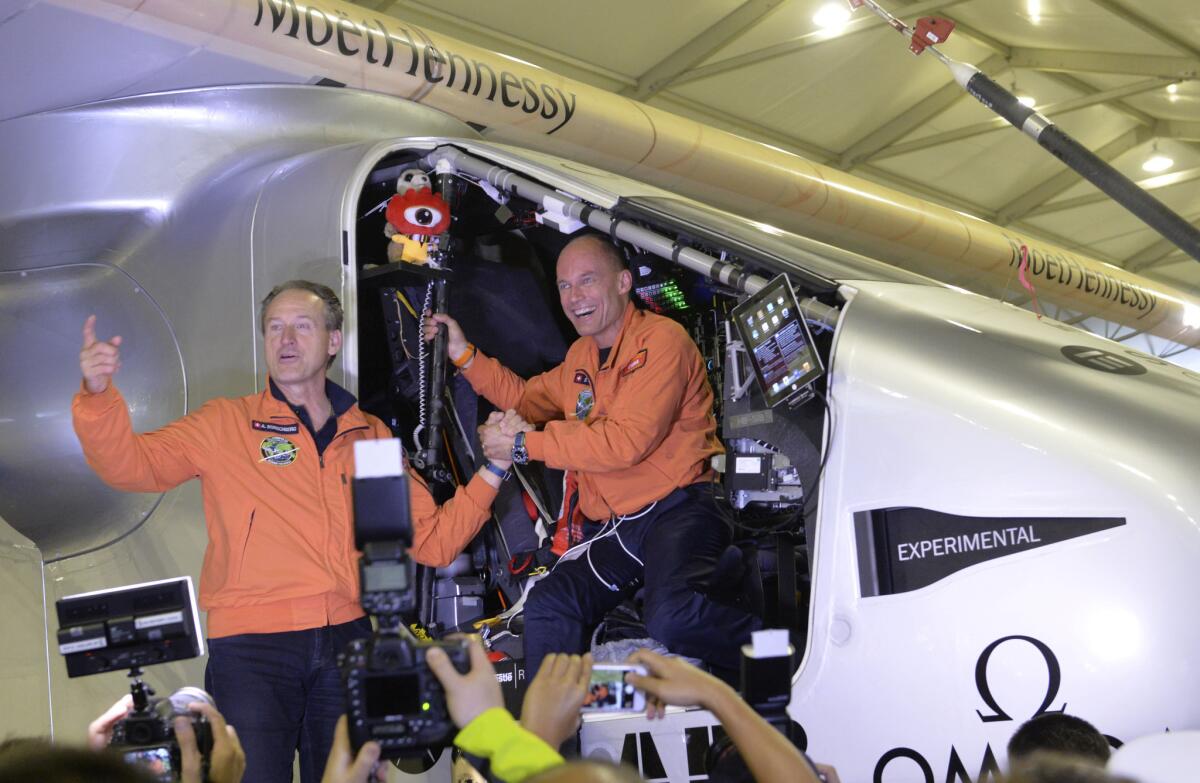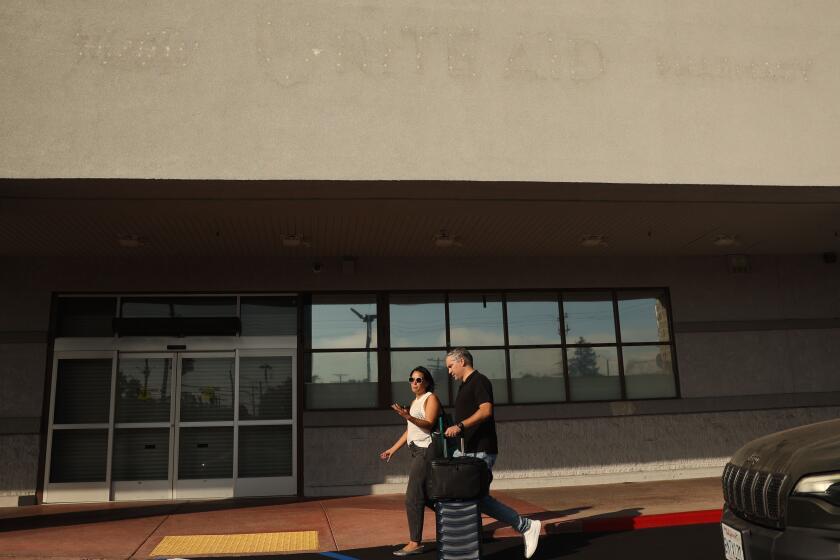Pilots prepare to set off on Pacific leg of solar-powered flight

Swiss pilots Andre Boschberg, left, and Bertrand Piccard stand in the cockpit of their solar-powered plane after it touched down in Nanjing, China, on March 31. Borschberg will probably start the next leg of the trip -- crossing the Pacific Ocean to Hawaii -- on Monday.
Bertrand Piccard has flown hang gliders, and even a hot air balloon.
Now he can add another aircraft to the list -- a solar-powered plane.
The 57-year-old Swiss pilot, along with fellow Swiss pilot Andre Borschberg, is attempting to make the first flight around the world in the solar-powered plane Solar Impulse 2.
The pair have already completed six legs of the 12-part adventure, which started in Abu Dhabi in March.
Up next: a flight by Borschberg from Nanjing, China, to Hawaii. Due to weather conditions, the plane will take off no earlier than Monday.
Piccard described the first legs of the trip, which jumped from the United Arab Emirates to Oman, then India to Myanmar and now China, as “successful.”
“Now it’s the big jump,” he said. “The two next flights are going to be very challenging.”
Piccard will pilot the plane on the second leg of the trans-Pacific flight -- a four-day journey from Hawaii to Phoenix that is expected to start toward the end of May.
Each leg is flown by a solo pilot due to space constraints inside the plane, which weighs about as much as a car and has a wingspan larger than that of a standard Boeing 747. The wings contains 17,000 solar cells that power four electric motors.
During the daytime, in addition to powering the plane’s engines, the solar cells recharge lithium batteries so the aircraft can continue flying at night.
As for sleep, Piccard said he and Borschberg expect to take 20-minute naps with the plane on autopilot.
“We have trained like this,” he said. “We’re ready.”
Breaking aviation records is nothing new to Piccard, who was the first, along with a copilot, to fly a balloon nonstop around the world. He said he was afraid he would run out of gas each day on that journey, which eventually led to his goal of flying around the world without fuel.
He and Borschberg say on their website that the goal of the flight is not to suggest that commercial aviation should go solar, but to demonstrate that renewable energy works.
“If we succeed, we show that the technology to be more energy efficient, to save the natural resources of planet, are already existing,” he said.
For more business news, follow @smasunaga.
More to Read
Inside the business of entertainment
The Wide Shot brings you news, analysis and insights on everything from streaming wars to production — and what it all means for the future.
You may occasionally receive promotional content from the Los Angeles Times.










